Last Updated on January 15, 2024 by Admin
Construction materials or Building materials are materials used for construction. Many naturally occurring substances, such as clay, rocks, sand, and wood, have been used to construct buildings. Apart from naturally occurring materials, many manufactured products are used, some more and some less synthetic. We have discussed the various types of construction materials used in building constructions. Check these construction materials’ name lists with pictures.
Materials used in building construction must be selected carefully to ensure the safety and long-lasting life of the building. Construction materials definition is, the materials used in construction projects are called construction materials.
What are the Construction Materials?
Construction materials are the materials used to construct buildings, roads, and other infrastructure. Common construction materials include wood, concrete, steel, and asphalt. Advancements in building material and construction technology are revolutionizing how we design and erect sustainable and resilient structures.
Construction materials must be strong and durable to withstand the forces of construction and use. They must also be able to resist weathering and other environmental effects.
The construction materials list includes cement, steel, sand, concrete, ready-mix concrete, binding wires, aggregates, bricks, blocks, etc. apart from these, various eco-friendly construction materials are also used in building construction.
Properties of Construction Materials
Construction materials have many properties that make them suitable for different applications. Some of the most important properties include strength, durability, stiffness, and resistance to fire, water, and pests. Different materials have different combinations of these properties, so it’s important to choose the right material for the job.
Construction materials are designed to withstand various loads and stresses. Strength is the ability of a material to resist forces that try to break it. Stiffness is the ability of a material to resist deformation when force is applied. Toughness is the ability of a material to absorb energy without breaking. Durability is the ability of a material to resist wear and tear over time.
For example, concrete is very strong and durable, but it’s not very stiff, so it’s not ideal for building bridges. Steel is much stiffer than concrete, making it a better choice for bridges.
Types of Construction Materials
Buildings can be categorized into five different types of construction: fire-resistive, non-combustible, ordinary, heavy timber, and wood-framed. Based on the construction types, various materials are used in the construction of buildings. You can find below a list of materials used to build a house with pictures here.
Building construction materials are used to help make new buildings. The contents of the building materials list depend on how big your project is. The larger your project, the more it will cost and you will need to buy more materials.
The list of materials used in building construction is extensive, but it doesn’t have to be overwhelming. With just a little bit of research and planning, you can reduce the time spent looking for the best company to help you with your project. In the field of building material and construction, the emphasis is increasingly on eco-friendly options that reduce environmental impact without compromising structural integrity.
The Building Construction Materials List is a compilation of standard building materials. It includes everything from plaster to cement, with an index and lots of other information. Wood, stone, marble, and more! If you’re looking for the best building materials names out there, check out these articles.
There are many different types of building materials to pick from including roofing, insulation, fence material, or siding for your new home. Here you can check the construction materials name list with pictures
Want to pinpoint the specific material you need? This construction materials name list with pictures pdf showcases every available construction material and offers a picture of each one.
If you want to work on a construction project and don’t know where to get materials, you can use our building construction materials list pdf to find all the most common components.
A list of building materials can mean different things. Some are completely natural, like wood, while others are artificial and constructed from recycled materials.
The perfect house construction materials list can be hard to find and daunting if you’ve never built a house. It’s also imperative that every item on your list is marked with a quantity, as the price varies based on how much you buy.
All these construction materials are used in building construction projects. Find below the construction materials list, the name list with pictures, and various construction materials used in house construction.
1. Cement – Construction Materials
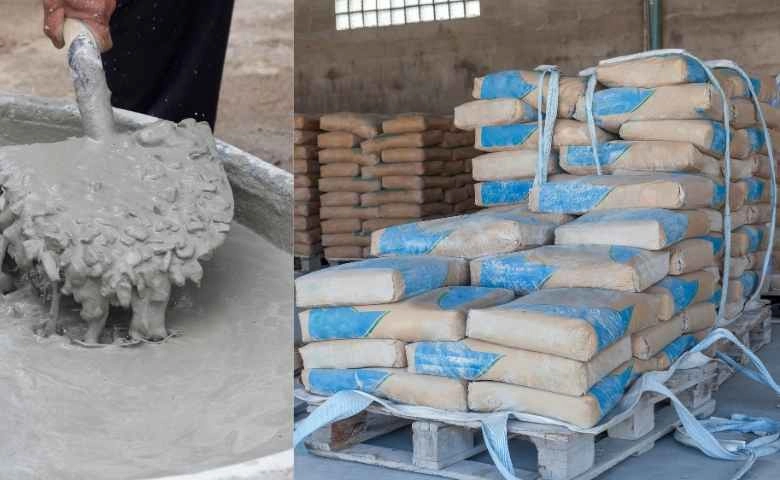
A cement is a binder, a substance used for construction that sets, hardens, and adheres to other materials to bind them together. Cement is seldom used but rather to bind sand and gravel together. Cement companies produced mixed with fine aggregate to make mortar for masonry, or with sand and gravel for concrete.
2. Structural Steel
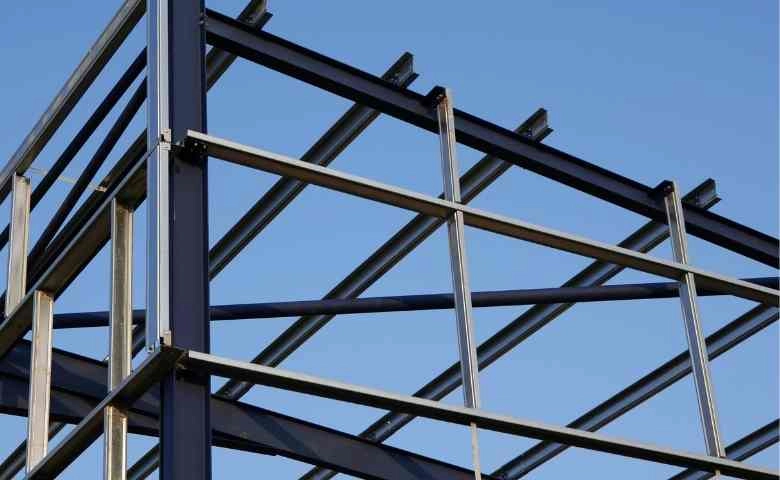
Structural steel is a popular construction material used alongside concrete to create impressive and long-lasting buildings. Its versatility, sustainability, and flexibility are the main reasons for its use and cost-effectiveness.
3. Reinforcement Steel
Steel reinforcement bars or rebars are used to improve the tensile strength of the concrete since concrete is fragile in tension but is strong in compression. Steel is only used as rebar because of the elongation of steel due to high temperatures (thermal expansion coefficient) nearly equal to that of concrete.
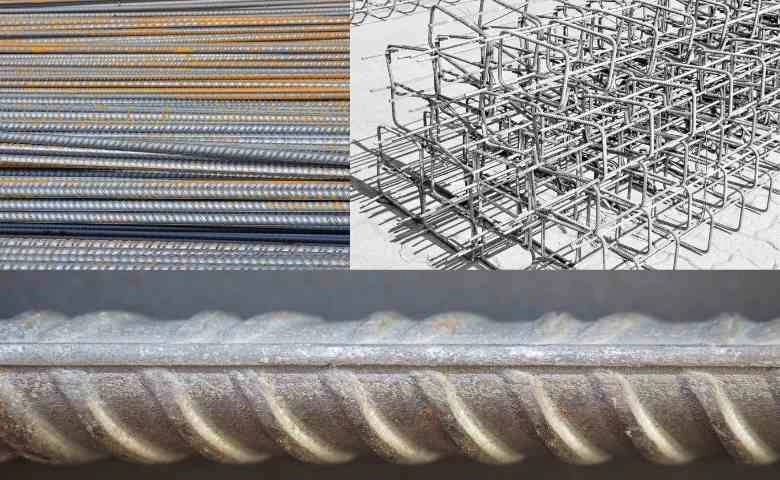
Carbon steel is the most common form of steel rebar. Rebar is commonly used as a tensioning device in reinforced concrete and reinforced masonry structures holding the concrete in compression.
4. Bitumen
Bitumen is a material obtained by fractional distillation of crude petroleum as an end product. According to IS: 334-1951, bitumen is a non-crystalline solid or viscous material having adhesive properties derived from oil either by natural or refinery process.

Bituminous materials are used for road construction, roofing, waterproofing, and other applications. For the main application, which is road construction, the primary concerns, as with concrete, are cost and durability.
5. River sand or Natural sand as a Construction Materials
This sand is white-grey and is one of the fine-graded sands used to construct buildings. They are mainly used in concrete and masonry work. They can also be used for RCC, plastering, and other brick or block works.
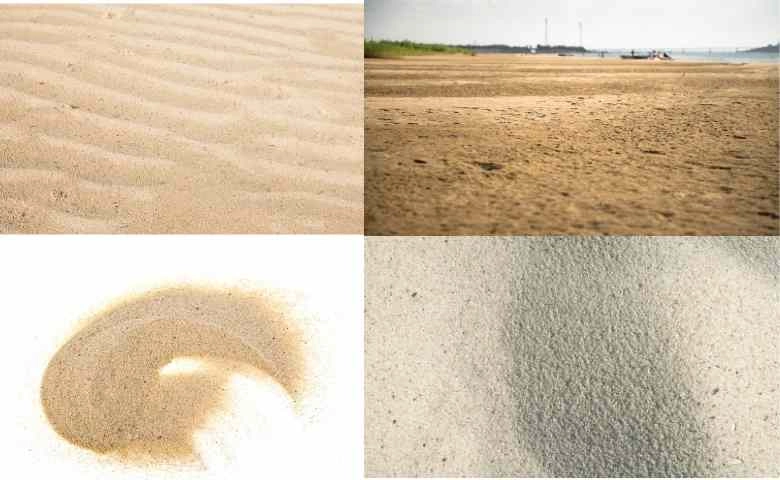
6. Concrete
Concrete is the most widely used construction material in the entire world. These materials include cement, water, fine aggregate, and crushed stones or gravel. Sand and gravel or crushed stones are fine aggregate and coarse aggregate, respectively.
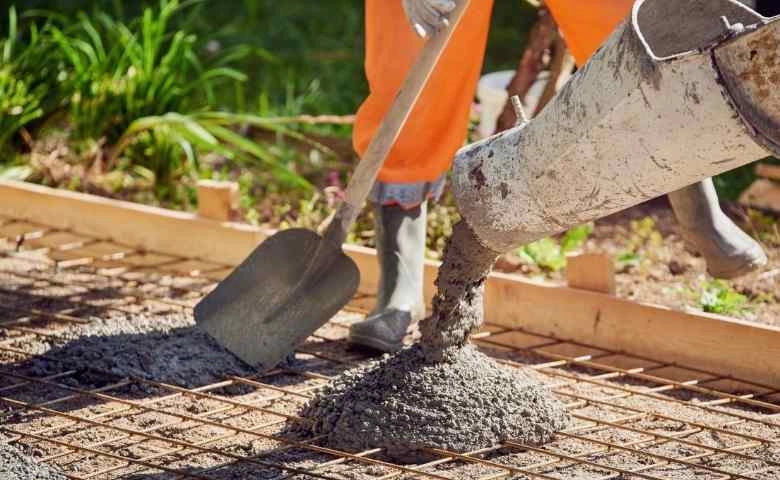
7. Ready-mix concrete
According to a set engineered mix design, Ready-Mix Concrete is manufactured in a batch plant.
8. Binding wires
Binding Wire is used for tying applications in the field of construction. It is used extensively in the construction sector to tie the rebars at the joints to keep the structure intact. Binding wire is also called annealed wire and is made of mild steel.
9. Fly Ash
Fly ash is a refined powder byproduct of burning pulverized coal in electric power plants. Fly ash is a pozzolan, a substance containing aluminous and siliceous material that forms cement in the presence of water.
Fly ash can be used as prime material in many cement-based products, such as poured concrete, concrete block, and brick.
One of the most common uses of fly ash is in Portland cement concrete pavement or PCC pavement. Using PCC, road construction projects can use a great deal of concrete, and substituting fly ash provides significant economic benefits.
10. Aggregate – Construction Materials
Construction aggregate, or simply aggregate, is a broad category of coarse to medium-grained particulate material used in construction, including sand, gravel, crushed stone, slag, recycled concrete, and geosynthetic aggregates. Aggregates are the most mined materials in the world. One of the essential types of construction materials.
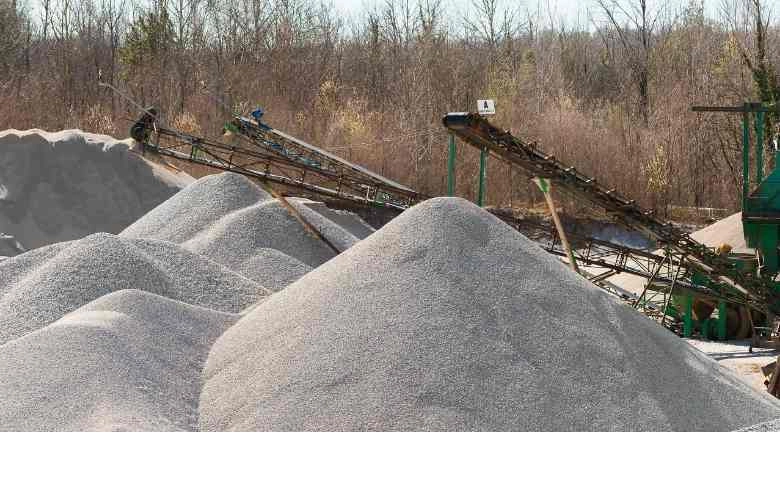
11. Bricks
A brick is a type of block used to build walls, pavements, and other elements in masonry construction. Appropriately, the term brick denotes a block composed of dried clay but is now also used informally to indicate other chemically cured construction blocks.
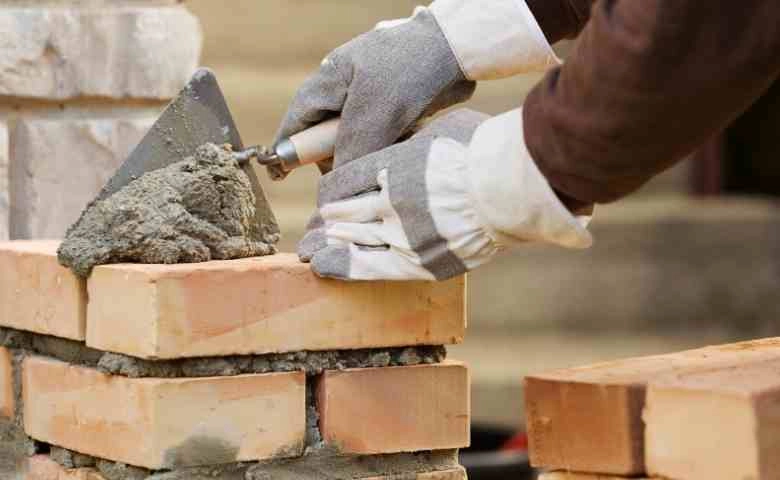
Bricks can be joined together using mortar, adhesives, or interlocking them. Bricks are produced in numerous classes, types, materials, and sizes which vary with region and period and are made in bulk quantities.
12. Blocks
Blocks are constructed using concrete or cement. They may include a hollow core to make them lighter and improve their insulation properties. They are now used for various purposes, such as the construction of load-bearing walls, retaining walls, partitions, and foundations.
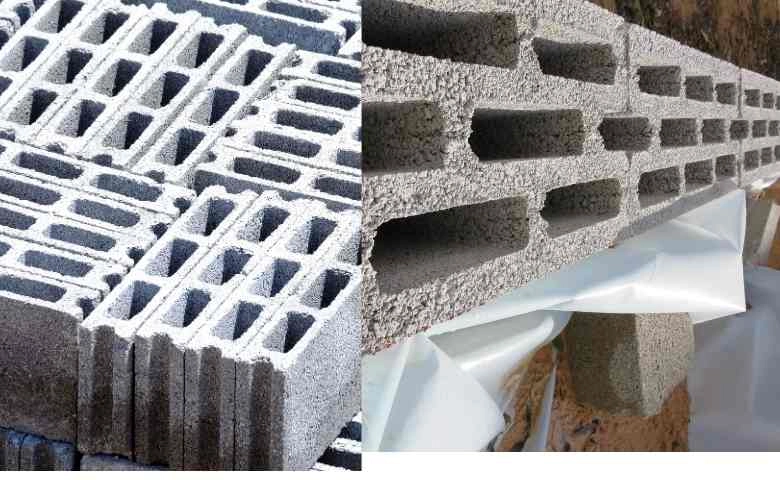
13. Timber (Wood) as a Construction Materials
Timber is used indoors, in the windows, cabinets, cupboards, shelves, tables, railings, etc. Timber is also popularly used in the form of plywood & raw wood. Products like ply blocks and ply boards, heavy patterned doors, and windows are made of solid wood/timber to provide strength, toughness, and durability.
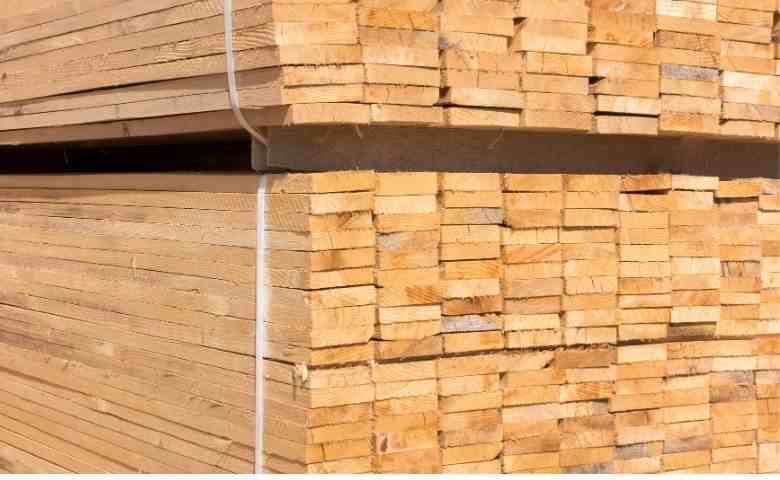
Also, wood is one of the most used natural building materials globally. Hardwoods are commonly used to construct walls, ceilings, and floors, while softwoods are often used to make doors, furniture, and window frames. Some examples of the most popular hardwoods include oak, maple, mahogany, cherry, walnut, and teak.
14. Masonry
Masonry is building structures from individual units, often laid in and bound together by mortar; the term masonry can also refer to the units themselves.
The basic materials of masonry construction include brick, building stone such as marble, granite, limestone, cast stone, concrete block, glass block, and adobe. It is one of types of construction materials.
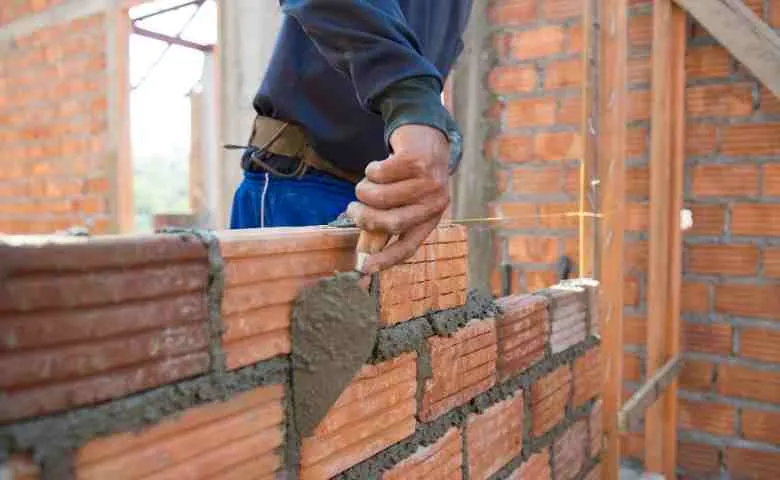
It is generally a highly durable form of construction. However, the materials used, the quality of the mortar and artistry, and the pattern in which the units are assembled can substantially affect the durability of the overall masonry construction.
Mason or Bricklayer is the person who constructs masonry. Masonry can be classified into A. Stone Masonry. B. Brick Masonry. C. Composite Masonry. D. Cavity walls. E. Lintel & Arches.
Apart from the above list of construction materials, there are many sustainable building materials that can be used in construction. Some of the most popular options include bamboo, recycled plastic, and hempcrete. Bamboo is a strong and durable material that grows quickly, making it a great choice for construction projects. Understanding the properties of various building material and construction methods is essential for architects and engineers to create safe, efficient, and aesthetically pleasing buildings.
Recycled plastic is another sustainable option that can be used in a variety of ways, including decking, fencing, and siding. Hempcrete is made from a mix of hemp hurds and lime, and it is a great insulator that can be used in both new construction and retrofit projects.
Conclusion
When embarking on a building construction project, the selection of construction materials is a critical step that can determine the durability, aesthetic, and overall cost of the project. The construction materials used range from traditional bricks and mortar to innovative polymers and composites, each with its unique properties and applications in civil engineering.
A comprehensive construction materials list is essential for planning and budgeting. This list often includes concrete, steel, wood, glass, and stone, among others. These materials are the backbone of any construction project, whether it’s a towering skyscraper or a residential house. Understanding the construction materials properties, such as tensile strength, thermal conductivity, and weather resistance, allows engineers and builders to choose the right material for each part of a structure.
For those who want to delve deeper into the subject, a construction materials book or a detailed construction materials pdf can provide extensive knowledge on the subject. These resources typically include a construction materials name list with pictures, making it easier to identify and understand the use of each material. Moreover, for a focused regional approach, such as construction materials in India, these resources can offer localized information on material availability and commonly used building techniques.
The construction materials types are vast and varied. From the basic building material like cement to more complex composites used in high-end designs, the range is exhaustive. For a more visual representation, construction materials images serve as a handy reference for both professionals and laypersons alike. These images, combined with a construction materials name list, become a powerful tool in both education and in the field.
For practical purposes, finding construction materials near me is facilitated by numerous suppliers and databases that can be accessed online. This ease of access simplifies the procurement process, ensuring that projects stay on track. Additionally, aspiring students and professionals can benefit from building construction materials pdf files that provide in-depth discussions on each material’s characteristics and uses.
In conclusion, whether you are a seasoned civil engineer or a homeowner looking to understand more about the materials that will go into your home, a thorough knowledge of construction materials examples, their properties, and applications is invaluable. It’s advisable to consult a variety of sources including construction materials list pdf, construction materials types, and construction materials names to make informed decisions for any construction project.
Good differentiation of these types of construction materials is that some do not have certain uses given to them. For instance, cement only serves for the maintenance of construction structures, and paint is only made for the correction of colors or put on the material before being sent out to customers. In conclusion, each type of material can be differentiated from the other by the use that it gives to customers.
Related Posts:
- What Is the Difference between Aggregate, Cement, and Concrete?
- Types of Wire and Cable Used in Building Construction
- Thermal Bridging: Everything you need to know about
- 4 Must-Have Software Additions to Building Material Websites
- The ultimate guide to selecting a flooring material for your home
- What Is Composite Materials And Application Of Composite Materials In Construction?
- Interesting Facts About How Composite Materials Are Manufactured
- Top 10 Sustainable Construction Materials to Look for In 2024
FAQs
There are a variety of construction materials used in buildings and other structures. The most common materials are concrete, wood, metal, and stone. Concrete is a mixture of cement, water, and aggregate (sand and gravel). It is widely used for foundations, walls, floors, and driveways. Wood is also a popular construction material. It is strong and easy to work with. Metal is often used for framing and roofing. Stone is commonly used for exterior walls and fireplace surrounds.
There are a variety of special materials used in construction. Some of these materials include concrete, asphalt, glass, and steel. Each material has its own unique properties that make it well-suited for specific construction applications.
Basic construction material refers to the fundamental components that are used to construct the framework of buildings. Typically, this includes cement, bricks, concrete, wood, and steel. These materials are chosen for their durability, strength, and ability to form the structural foundation of construction projects.
The materials most commonly employed in construction vary based on the project but generally include concrete, steel, wood, glass, and stone. These materials are selected for their structural properties, cost-effectiveness, and suitability for various environmental conditions and aesthetic purposes.
A construction material list is a comprehensive inventory that enumerates all the components and supplies required for a construction project. This detailed list serves as a guideline for procurement, budgeting, and ensures that all necessary materials are accounted for before the commencement of the project.
Yes, five fundamental construction materials commonly recognized in the industry are concrete, steel, timber, brick, and glass. Each of these materials is integral to building construction, known for specific characteristics like load-bearing strength, flexibility, insulation properties, and aesthetic appeal.

